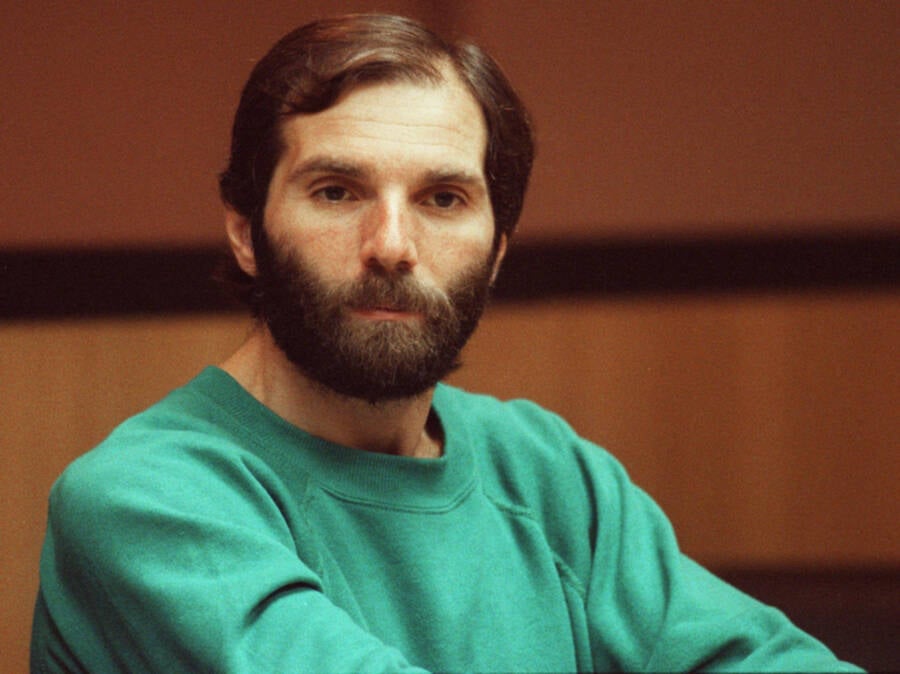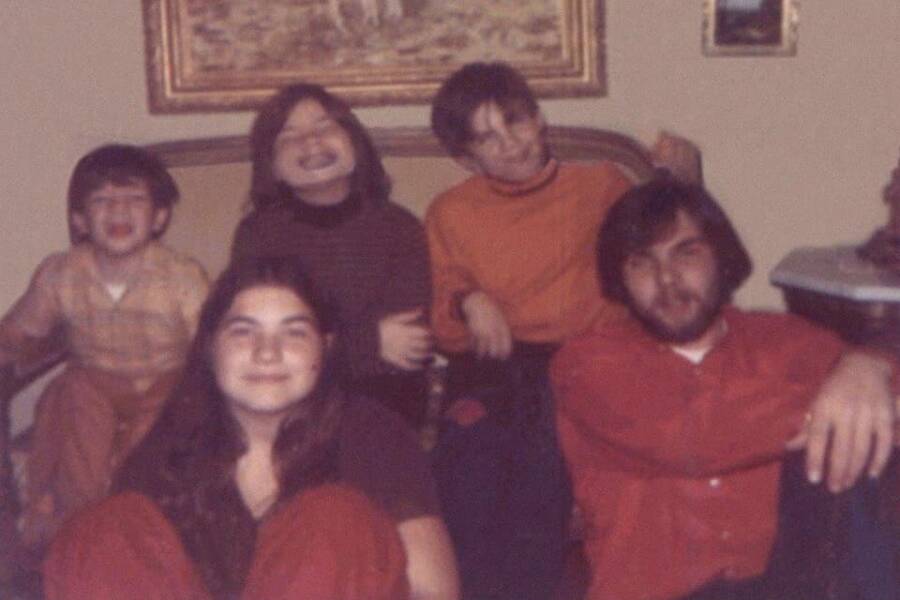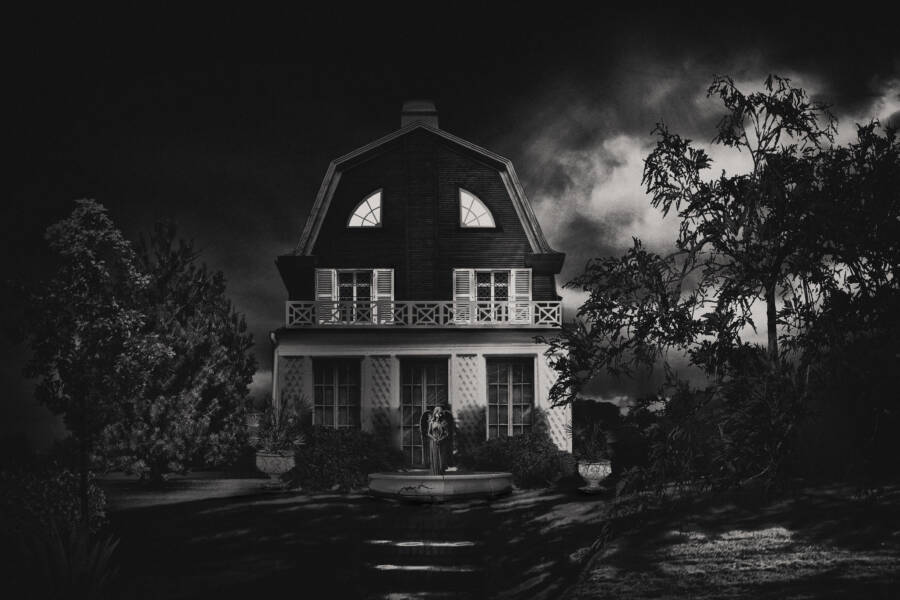In 1974, Ronald DeFeo Jr. fatally shot his parents and four younger siblings in their Long Island home — then blamed the murder spree on demons.
On the day that his family was murdered, Ronald DeFeo Jr. spent most of the afternoon with his friends. But he also called his parents and siblings multiple times, mentioning to his friends that he couldn’t get in touch with them. Eventually, he returned to his family’s home in Amityville, New York to check on everyone. No one expected what came next.
Later that same day, on November 13, 1974, the 23-year-old ran to a local bar in hysterics, screaming that his father, mother, two brothers, and two sisters had been murdered. A group of DeFeo’s friends accompanied him back to his house, where they were all met with a gruesome sight: Every member of the DeFeo family had been fatally shot while sleeping in their beds.

John Cornell/Newsday RM via Getty ImagesRonald DeFeo Jr.’s murder spree in his Amityville, New York home led to rumors that the house was haunted.
When police arrived on the scene, they found Ronald DeFeo Jr. in shock. He told them that he believed his family may have been targeted by the mob. He even named a potential mob hitman. But police soon discovered that the alleged hitman was out of town, and DeFeo’s story wasn’t adding up.
The next day, he confessed to the truth: He killed his family. And, as his lawyer would later claim, the “demonic voices” in his head made him do it.
Now known as the Amityville Murders, the ghastly story only evolved from there. The home where the DeFeos were murdered, 112 Ocean Avenue, was soon rumored to be haunted and it inspired the 1979 film The Amityville Horror. But whether or not the “Amityville Horror House” was cursed doesn’t change the truth about what happened there in 1974 — or the man who carried out one of the most infamous crimes in Long Island history.
Ronald DeFeo Jr.’s Troubled Early Life
Ronald Joseph DeFeo Jr. was born on September 26, 1951, the oldest of five children of Ronald DeFeo Sr. and Louise DeFeo. The family led a comfortable, upper-middle-class lifestyle on Long Island, thanks in part to Ronald Sr.’s job at his father-in-law’s car dealership. However, as Biography reports, Ronald Sr. was hot-headed and domineering, and sometimes violent toward his family — especially Ronald Jr., who was nicknamed “Butch.”
Ronald Sr. had high expectations for his eldest son and made his anger and disappointment known whenever Butch failed to live up to them.
If life at home was rough for Butch, it only got worse when he went to school. As a child, he was overweight and shy — and other kids frequently tormented him. By his teen years, Butch started lashing out, both against his abusive father and his classmates. In an attempt to help their deeply troubled son, Ronald Sr. and Louise DeFeo took him to see a psychiatrist.

Facebook Ronald DeFeo Jr. (left) with his father, Ronald DeFeo Sr. (right)
Butch, however, insisted that he didn’t need help and refused to attend the psychiatrist appointments. Hoping to convince him to improve his behavior in another way, the DeFeos started providing Butch with expensive gifts, but this too failed to correct his course in life. By 17, Butch was regularly using LSD and heroin, and spending most of his allowance on drugs and booze. And he got kicked out of school due to his violence toward other students.
The DeFeos didn’t know what else to do. Punishing Butch didn’t work, and he refused to get help. Ronald Sr. got his son a job at his dealership, giving him a weekly stipend regardless of how poorly Butch performed his job duties.
Butch then used this money to buy more alcohol and drugs — and guns.
How Ronald DeFeo Jr.’s Outbursts Worsened
Despite having a steady job and enough money and freedom to do what he wanted, Ronald “Butch” DeFeo Jr.’s situation worsened. He established a reputation for getting drunk and starting fights, and on one occasion attempted to attack his father with a shotgun while his parents were arguing.
In a 1974 interview with The New York Times, Butch’s friend Jackie Hales said that he was part of a crowd who “would drink and then get into fights, but the next day they’d apologize.” Not long before the murders, Hales said DeFeo had broken a pool cue in half “because he was angry.”
Still, most people who knew the DeFeos considered them to be a “nice, normal family.” They were outwardly kind and religious, holding a “prayer huddle on Sunday mornings,” as one family friend recalled.

Public DomainThe five DeFeo children. Back row: John, Allison, and Marc. Front row: Dawn and Ronald Jr.
In 1973, the DeFeos installed a statue of St. Joseph — the patron saint of families and fathers — holding baby Jesus on their front lawn. Around the same time, Butch handed out statuettes of the same saint to his co-workers, telling them, “Nothing can happen to you as long as you wear this.”
Then, in October 1974, Butch was entrusted by his family’s dealership with depositing approximately $20,000 to the bank — but Butch, ever unsatisfied, felt like he wasn’t earning enough in wages and devised a plan with a friend to stage a fake robbery and steal the money for themselves.
His plan soon fell apart when police arrived at the dealership to question him. He refused to cooperate with the authorities, and Ronald Sr. then interrogated his son about his potential involvement in the robbery. The conversation ended with Butch threatening to kill his father.
The Amityville Murders And The Tragic Aftermath
In the early hours of November 13, 1974, Ronald DeFeo Jr. stalked through his family’s house with a .35-caliber Marlin rifle. The first room that he entered was his parents’ — and he fatally shot them both. He then entered his four siblings’ rooms and murdered his sisters and brothers: 18-year-old Dawn, 13-year-old Allison, 12-year-old Marc, and 9-year-old John Matthew.
Afterward, he took a shower, hid his bloody clothing and gun in a pillowcase, and left for work, ditching the evidence in a storm drain along the way.
That day at work, DeFeo made several calls to his family’s home, feigning surprise that his father hadn’t come in. By the afternoon, he had left work to hang out with friends, still making calls to the DeFeo home and, naturally, receiving no answer. After leaving his group to “check” on his relatives in the early evening, DeFeo claimed to have found his family murdered.
Over the course of the ensuing investigation, DeFeo spun several tales about what had happened on the day of the Amityville Murders. At first, he tried to blame a mob hitman named Louis Falini — but police quickly learned that Falini was out of town at the time. He couldn’t have killed the DeFeos.
Then, the next day, Ronald DeFeo Jr. confessed, later claiming that he heard voices in his head that pushed him to kill his family.
The chilling story quickly spread, with rumors surfacing across the country that DeFeo was tormented by demons. When another family, George and Kathy Lutz and their three children, moved into the home about a year later, they perpetuated the story further, claiming the house was haunted by malevolent spirits.
It soon became known as the Amityville Horror House, was investigated by famed (and controversial) ghost hunters Ed and Lorraine Warren, and inspired a number of books and movies, including the 1979 film The Amityville Horror.

FacebookThe former DeFeo home at 112 Ocean Avenue, also known as the Amityville Horror House.
But the Lutzes have been accused of fabricating their stories over the years in order to sell books and land a movie deal — and Ronald DeFeo Jr.’s later claims seem to back this up. According to a 1992 interview with DeFeo, he made up hearing voices on the advice of his lawyer, William Weber, to make the story sound more attractive for future book and movie contracts.
“William Weber gave me no choice,” DeFeo told The New York Times. “He told me I had to do this. He told me there would be a lot of money from book rights and a movie. He would have me out in a couple of years and I would come into all that money. The whole thing was a con, except for the crime.”
That same year, DeFeo attempted to seek a new trial, this time claiming that the offer of movie money tainted his original trial and that his 18-year-old sister, Dawn, had been the real culprit responsible for murdering their family. He did admit to killing Dawn, but only after discovering her alleged crimes.
At a 1999 parole hearing, DeFeo said, “I loved my family very much.”
DeFeo spent the rest of his life in prison. He died in March 2021 at age 69.
After reading about Ronald DeFeo Jr. and the Amityville Murders, learn about 11 real-life murders that were inspired by horror movies. Then, take a look at the true story of Candyman that inspired the horror classic.





